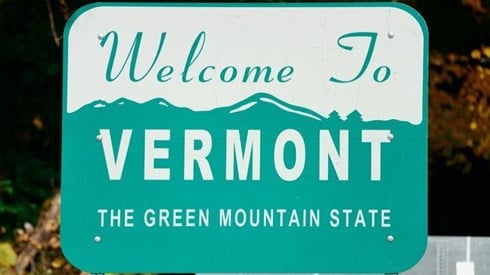Discussion of Captives' Experiences Highlights Various Captive Benefits

October 16, 2023

A captive insurance company can offer a variety of benefits in addition to offering coverage options beyond what's available in the commercial market, the experiences of two captive programs suggest.
Speaking at a recent Vermont Captive Insurance Association (VCIA) Captive Roadshow event in Chicago, Liz Venhuizen, director of risk and insurance at Generations Risk Management, and Julie Bordo, CEO and president of PCH Mutual Insurance Company, shared details of their captives' experiences.
"One of the things we're most proud of at PCH is we've got a lot of data. We've got a lot of data on risk and how to mitigate risk," Ms. Bordo said. Her organization's risk retention group (RRG) structure facilitates sharing risk management data among PCH's members, she said.
"The beauty of a risk retention group is you have a collective, you have a collective of people who do the same thing," Ms. Bordo said. That allows the RRG to leverage the knowledge and experience of its members, she said.
PCH has nearly 3,600 members providing nonmedical residential long-term care for vulnerable adults. A majority of members are very small facilities with approximately six beds, Ms. Bordo said, in addition to a number of medium-sized facilities and about 10 large facilities of approximately 100 beds.
PCH regularly participates in benchmarking studies, Ms. Bordo said, "Because we really believe in the open-source concept.
"We want to help the whole industry be better because we never lose sight of who we are serving is residents, vulnerable adults, and however we can make our members succeed, do their job better, the ultimately beneficiary is your mom or dad, your grandma or grandpa, or some loved one who has some disability," Ms. Bordo said.
"Never lose sight of your ultimate objectives," she said. "It's helping people to be their best so that that risk that they're there to insure is mitigated and somebody's not hurt or something doesn't go wrong and an adverse event doesn't cascade into something catastrophic."
Ms. Venhuizen noted that Generations Risk Management addresses the risks of Ozinga, a 95-year-old ready-mix concrete supplier, now being managed by its founding family's fourth generation. The company has operations in 6 states and more than 1,000 trucks on the road.
"We want to make a positive impact on individuals, their families, and the community," Ms. Venhuizen said.
"We're a very innovative company," Ms. Venhuizen said. "We're always working on safety."
Generations Risk Management was formed in 2019, to address a large retention in Ozinga's casualty insurance program, Ms. Venhuizen said. While the company had considered forming a captive insurance company earlier, the hardening of the commercial market in 2018 made the concept more viable, she said.
"We already had a pretty sophisticated program, and the captive felt like the next step for us," Ms. Venhuizen said.
In addition to the casualty program retention in Ozinga's captive, the captive has been slowly growing, Ms. Venhuizen said. The company recently submitted a business plan to regulators that would see that captive adding medical stop loss, a portion of the Ozinga property program, and a portion of its rolling stock coverage.
In addition to providing coverage options, Ms. Venhuizen said she believes the presence of the captive elevates Ozinga in the eyes of insurers.
As she talks to insurers all year long, when they learn Ozinga has a captive they typically view it as a positive factor, she said. "I think it helps them to know that if there is something that's not commercially available to us at a good price, we can take it on ourselves," Ms. Venhuizen said. "If it’s not cost effective, we will take it in-house and do it ourselves in the captive.
"I think that they see that our insurance program is really sophisticated and elevated," Ms. Venhuizen said.
Ms. Bordo said for her RRG, the ability to leverage the expertise of its members has produced risk management benefits.
"For us, we have seen a lot of benefit on the risk management side, and the ability to communicate more in that realm," she said.
Ms. Bordo said PCH recently rolled out very short animated training videos addressing various aspects of the risks the RRG's members face.
"Within 5 minutes of that going out to our entire membership, one of our members came back and said, 'Hey, this is really great, but I think you also need to also mention X,' and spent a paragraph telling us how to enhance it," Ms. Bordo said. "I was delighted. We got engagement, and that felt really good. The power of the collective."
Ms. Venhuizen said at Ozinga the business side of the company has always been very involved in safety and risk. "It's a very collaborative environment, so we're meeting on a regular basis," she said. "We are sharing our stories. We have multiple divisions so we meet and we go over every incident that happened and what we could do to prevent it."
While that process and the use of data to try to prevent losses was already in place at Ozinga before the captive was formed, having the captive has elevated the process, Ms. Venhuizen said.
"I think the fact that the captive is a cost center, it has its own financial statements, it is speaking as an entity versus as a cost center or an operations center," she said.
Both Ms. Bordo and Ms. Venhuizen cited the benefits of technology in operating the captive.
Ms. Bordo encouraged members of the audience to adopt a mindset that innovation and technology are good and can provide benefits. "You have to be the kind of person to say, 'I would be open to that kind of opportunity,'" she said.
Ms. Venhuizen said Ozinga has been using enterprise risk management software and is expanding the use of that technology as the captive grows to help it make better data-driven decisions. "We use automated workflows with our enterprise risk software, and Ozinga is on the front end of technology and not afraid of technology, embracing technology," she said.
October 16, 2023





